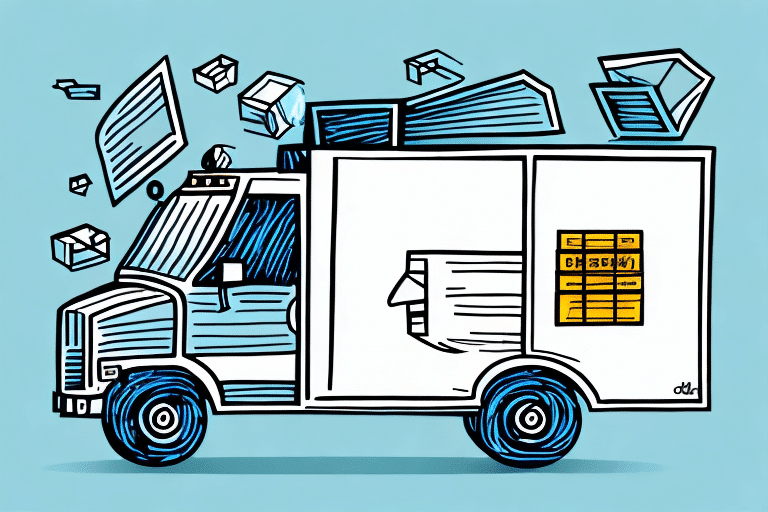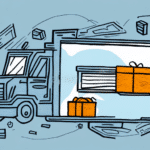Importance of Delivery Promise in Ecommerce
In today's increasingly digital world, consumers demand greater convenience and faster turnaround times. Ecommerce businesses must focus on crafting a competitive and reliable delivery promise to meet these expectations. A strong delivery promise can boost customer loyalty, attract new customers, and drive significant business growth.
Why Delivery Promise Matters
The delivery promise is a crucial aspect of the ecommerce experience as it directly impacts customer satisfaction. Providing an excellent product or service is no longer sufficient; businesses must also ensure an exceptional delivery experience. A well-crafted delivery promise sets clear customer expectations and assures them that their product will arrive on time and in perfect condition.
A reliable delivery promise helps build trust and loyalty. Consistently meeting or exceeding delivery expectations encourages customers to return for future purchases and recommend the business to others. Conversely, failing to meet delivery promises can result in negative reviews, lost sales, and damage to the business’s reputation.
The Impact of Delivery Speed on Customer Satisfaction
Delivery speed significantly influences customer satisfaction in ecommerce. In a landscape where customers expect same-day or next-day delivery, offering competitive delivery times is essential for maintaining customer loyalty. According to a 2023 survey by MetaPack, 96% of customers expect delivery options to be displayed before checkout.
Offering multiple delivery options, especially faster ones, can give businesses a competitive edge and increase the likelihood that customers will choose their products over competitors. However, faster delivery options may come at a higher cost. Balancing delivery speed with cost is a challenge, but strategies like offering free or discounted faster delivery for customers who meet a certain spending threshold can help offset these costs.
Strategies for Enhancing Delivery Promise
Improving Delivery Time for Online Orders
To enhance delivery times, businesses should evaluate their operations and implement necessary changes. Strategies include:
- Outsourcing delivery to third-party logistics providers that offer faster delivery options.
- Prioritizing orders to ensure faster delivery for premium customers or those who have paid for expedited shipping.
- Building warehouses closer to key markets to reduce transit times.
- Collaborating with carriers to optimize shipment routing and utilizing technology to streamline the delivery process.
Implementing real-time tracking and communication with customers also improves the delivery experience by allowing customers to monitor their orders and receive updates on delivery status.
The Role of Technology in Streamlining Ecommerce Delivery
Technology plays a pivotal role in optimizing the ecommerce delivery process. Automated systems can eliminate errors, reduce shipping times, and enable real-time package tracking, enhancing overall efficiency. Investing in software solutions that integrate with ecommerce platforms can provide a seamless experience for customers and handle much of the logistics without human intervention.
Technology also allows businesses to offer multiple delivery options, such as same-day, next-day, and weekend delivery. This flexibility not only enhances the customer experience but also helps businesses stay competitive. Additionally, optimizing delivery routes through technology can reduce fuel costs and minimize the environmental impact of operations.
Leveraging Personalization in Delivery
Personalization can significantly enhance the delivery experience for customers. Utilizing data and artificial intelligence, businesses can tailor shipping options and track packages according to a customer's preferred delivery window, location, or carrier. Personalized communication strategies, such as tailored updates and notifications, keep customers informed and reduce uncertainty, leading to increased satisfaction and loyalty.
Managing Delivery Expectations
Setting Realistic and Achievable Delivery Promises
For a delivery promise to be effective, it must be realistic and achievable. Businesses should analyze the average time taken to deliver an item and set expectations within that timeframe. It's important to account for potential limitations or unexpected delays. Transparency with customers about any delays helps maintain trust and loyalty.
Implementing a rating system to track and improve delivery performance can ensure continuous improvement. Offering different delivery options, such as express or standard delivery, also caters to varying customer needs and preferences.
Clear Communication with Customers
Effective communication is essential for managing customer expectations regarding delivery. Clear and concise messaging on the website and throughout the checkout process helps create realistic expectations. Regular updates via SMS or email about order status keep customers informed and reduce anxiety.
During peak periods, such as holidays or sales events, delivery times may be longer. Communicating these potential delays in advance prevents customer frustration. Providing estimated delivery dates and times helps customers plan accordingly and enhances their overall experience.
Balancing Expectations with Operational Capacity
Businesses must align customer expectations with their operational capacity to ensure reliable and consistent delivery promises. Consistently offering faster delivery times than competitors can strain operational resources and lead to inefficiencies. Balancing delivery speed with capacity ensures that delivery promises are reliable and can be fulfilled consistently.
Navigating Logistics and Cost Implications
Shipping and Logistics Challenges
Ecommerce businesses often face shipping and logistics challenges, including fluctuating costs, unexpected delays, inventory management difficulties, and rising customer expectations. To effectively navigate these challenges, businesses should develop a robust logistical plan tailored to their target market’s specific needs. This includes scaling the delivery network and implementing efficient returns management processes.
Managing last-mile delivery is particularly challenging in urban areas due to traffic congestion and parking restrictions. Solutions include partnering with local delivery companies or utilizing alternative delivery methods like lockers or pickup points.
Cost Implications of a Competitive Delivery Promise
A competitive delivery promise involves higher logistics and infrastructure costs. Maintaining multiple warehouses, choosing efficient shipping carriers, and offering expedited or free shipping options increase operational expenses. Businesses must identify a balance between delivery speed, cost, and customer expectations to create a profitable delivery promise.
Strategies to manage costs include:
- Investing in technology to optimize delivery routes and reduce fuel consumption.
- Partnering with reliable logistics providers to ensure cost-effective delivery solutions.
- Implementing minimum spending thresholds for free expedited shipping to offset costs.
Measuring Success and Continuous Improvement
Key Performance Indicators (KPIs)
Tracking the success of an ecommerce delivery promise requires monitoring various KPIs, including:
- Delivery times
- Delivery cost per order
- Order accuracy
- Customer satisfaction rates
- Returns processing time
Regularly evaluating these KPIs helps businesses identify areas for improvement and measure the effectiveness of implemented changes. Continuous monitoring ensures that delivery promises remain aligned with customer expectations and operational capabilities.
Case Studies: Industry Leaders in Delivery Excellence
Several ecommerce companies have set exemplary standards for fast and reliable deliveries. For instance, Amazon Fresh offers same-day delivery of groceries in select areas, enhancing convenience for customers. Zappos is renowned for its speedy delivery, with some orders arriving as early as the next day.
These companies invest heavily in logistics infrastructure and technology to support their delivery promises. Their success underscores the importance of a competitive delivery promise in fostering customer trust and driving business growth.
Conclusion: Crafting a Competitive Delivery Promise for Long-Term Growth
Creating a competitive delivery promise is essential for long-term ecommerce growth. Businesses must invest in logistics infrastructure and technology, personalize the delivery experience, balance customer expectations with operational capacity, and continuously evaluate performance through KPIs. By delivering a reliable and efficient delivery experience, businesses can cultivate a loyal customer base, build trust, and drive sustained growth.






















